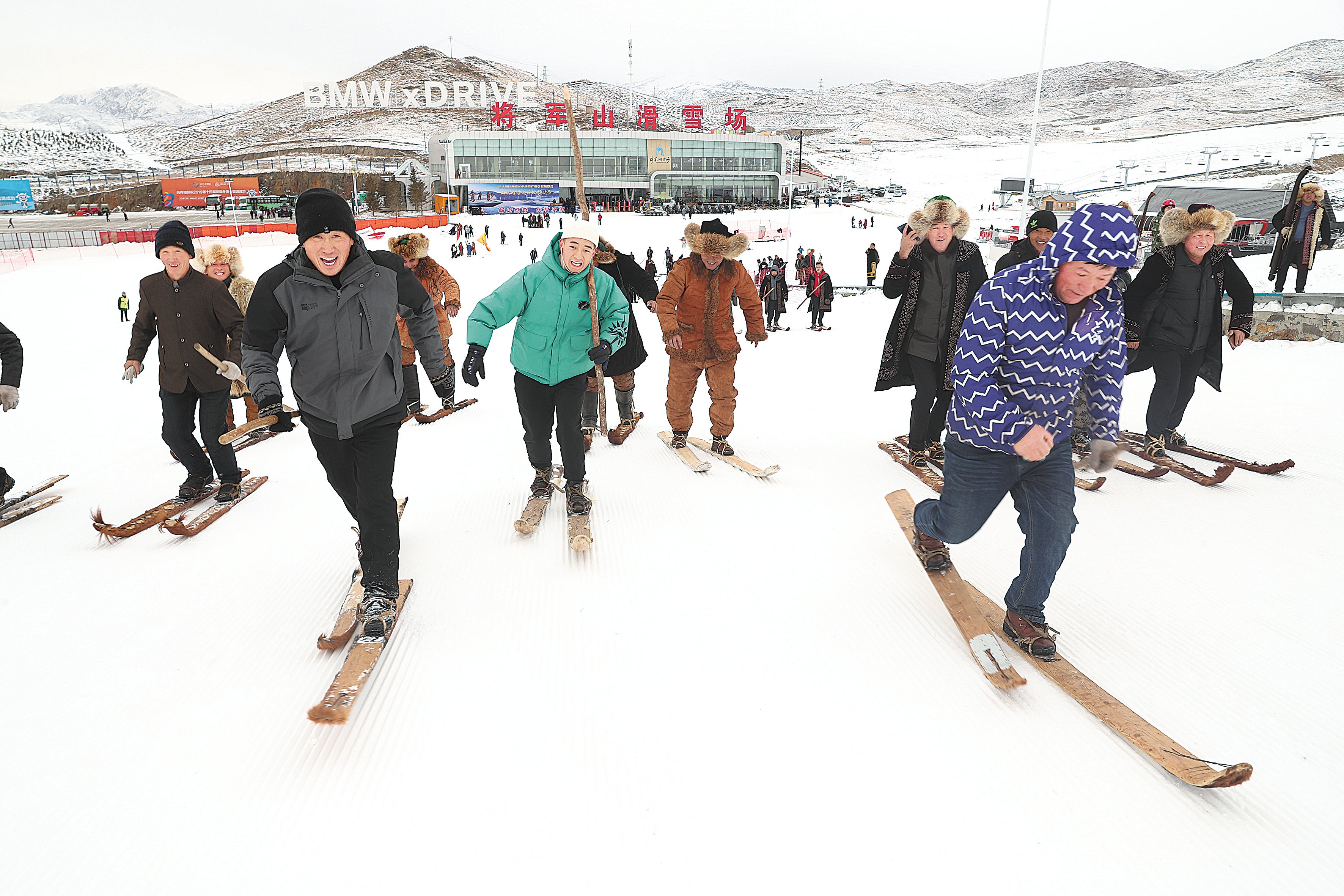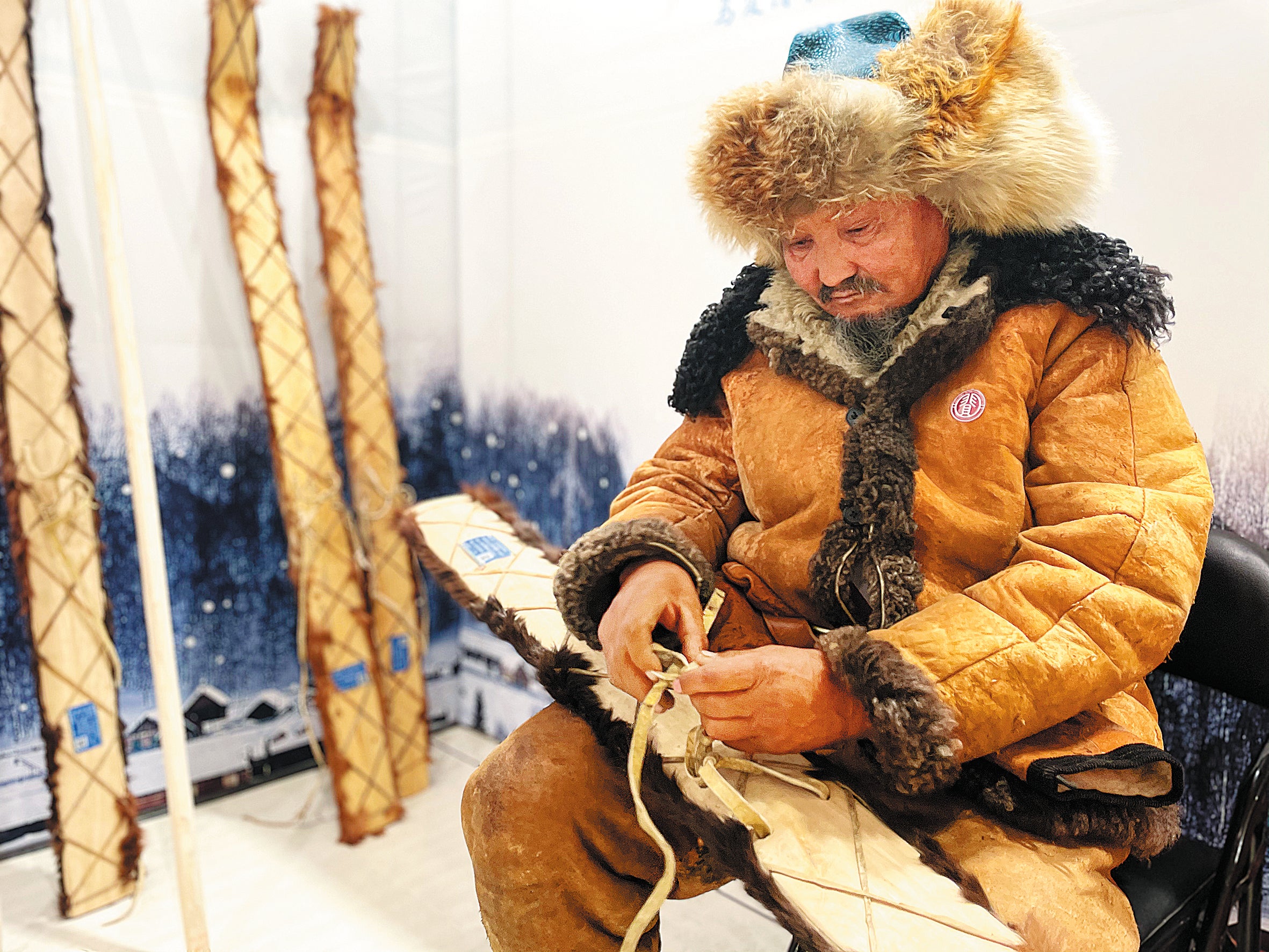Hide and ski
THE ARTICLES ON THESE PAGES ARE PRODUCED BY CHINA DAILY, WHICH TAKES SOLE RESPONSIBILITY FOR THE CONTENTS

Today’s skiers and snowboarders are used to relying on ski lifts at resorts to take them to the top of a mountain before experiencing the addictive thrill of swooshing down the powdery slopes.
However, in some snow-covered villages in Altay prefecture of northwest China’s Xinjiang Uygur autonomous region, it is common in winter to see local herdsmen, with planks attached to their feet, climbing the snowy inclines without any other form of assistance. And they do so in a relatively nimble way.
The pair of planks are wrapped with horsehide, which serves a double purpose. Remarkably, the horsehide not only provides friction to prevent skiers from slipping during their ascent, but also helps them slide more smoothly in the opposite direction.
According to rock carvings uncovered in the area by archaeologists, such skis have served as a means of transportation for the snowfield inhabitants of Altay for around 12,000 years, especially those who had to trek a long way in the snow to herd animals or hunt.
In recent decades, the fur skis gradually lost their popularity as paved roads began linking houses to the outside world. Consequently, craftsmen who made the fur skis had little chance to display their skills.
Now, Altay plans to protect and promote its skiing culture and better pass down its skiing tradition to future generations. The prefecture hopes to develop itself as a popular destination for skiers and snowboarders. As a result, the ancient fur skis and the craft of making them have found a new lease of life in modern times.
Silambek Sakish, 67, a herdsman in the village of Lasti in Altay, began learning the craft from his father at the age of 15.

“When I was young, most people in my village would wear the fur skis to go out in search of firewood or to graze their animals. Being one of the few families in the village who knew how to make the special footwear, we could make money from selling the fur skis every snow season,” he recalls.
The skis sold well in winter, but to prepare for the surge in sales, the family usually began production during summer, drying pine wood in the sun and purchasing horsehides from slaughterhouses.
Silambek will first cut the high-quality pine into a plank before heating it to the point where it becomes pliable enough to bend the front end upward. Wrapping the plank with horsehide is the last step.“I would wear the newly made fur skis to test them by sliding on the snow to see if they were durable and practical,” he says.
In 2010 Silambek was honoured as an inheritor of the craft of making fur skis, which had been designated as an intangible cultural heritage of Xinjiang. Supported by the local government, he set up a woodworking studio where he not only produces the traditional handmade fur skis, but also creates wooden souvenirs related to Altay’s skiing culture for tourists to purchase.
“A pair of fur skis can sell for around 1,500 yuan (£175). Last year, I earned around 60,000 yuan from the business,” he says.
His works are exhibited in ski resorts, airports and train stations across Altay and also at an exhibition centre for the Beijing 2022 Winter Olympics to promote the prefecture’s deep historical connection to skiing.
More young people have come to him to learn the craft, and his youngest son, who is 31, has followed in his footsteps by carrying on the tradition.
Previously published on Chinadaily.com.cn
